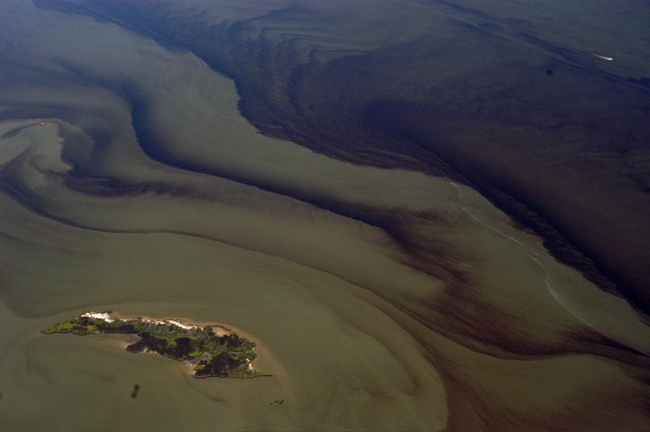Looking elsewhere to restore L.I’s surface waters to health

It’s a well-known story around these parts: One summer, around the mid-1980s, an explosion of harmful algae began to appear, sucking oxygen out of bay waters causing a die-off of eelgrass, shellfish and even finfish.
For the past few decades, the seasonal story has been on repeat — not only here, but in other states along the East Coast. It’s the result of nitrogen and other nutrients leaching into groundwater, mostly from underground cesspools and septic tanks.
After measures proposed to address the problem failed to even reach a vote in the state Legislature this year, elected leaders, with much input from Suffolk County officials, are going back to the drawing board to develop a sweeping and comprehensive plan to restore the health of Long Island’s surface waters.
Those solutions, experts agree, will need to include the adoption of advanced on-site wastewater treatment options, referred to as denitrification systems.
But integrating these systems won’t be feasible until financing options are available for area homeowners, county officials have said. That realization prompted them to study approaches taken by other similarly affected areas of the U.S., including Rhode Island, Maryland and Barnstable County, Mass., all of which implemented advanced wastewater management programs over the past decade. County planning officials toured these areas in April.
THE COSTS
A denitrification system for one private home can cost between $9,000 and $24,000 more than a conventional on-site cesspool, according to data collected on the tour. Homeowners must also pay annual maintenance contract costs of $90 to $450, as well as electricity costs that run from $50 to $100 annually, depending on the type of system, according to the summary.
Well-maintained treatment systems last about 20 years.
Given the high cost, said Dorian Dale, chief recovery officer and director of sustainability for the county, the necessity of such systems can be “hard to quantify” for average homeowners, who may not think they are directly affected by declining water quality.
“You can’t really make the direct link between wastewater and the homeowner,” he said. “If I tell someone to put in a $30,000 [denitrification] system, or ask them to pay $500 or $600 a year, it is still [money] they were not paying before.
“It comes back to a general recognition that water has value and once the water is compromised it has substantial financial impacts on its surroundings,” Mr. Dale said.
The economic consequences of ignoring water quality impacts “are potentially devastating,” according to the county’s Comprehensive Water Resources Management Plan, which has yet to be finalized. So, Mr. Dale said, county officials are trying to help homeowners understand the connection between property values and water quality.
He explained officials are working on creating a data system that will quantify the drop in property values that could occur if Long Island’s waters continue to deteriorate. The more immediate impact being felt by homeowners, he explained, is increasing vulnerability to storm damage thanks to erosion and the ongoing depletion of eelgrass, which once helped to protect area homes.
Long Island could also see losses in tourism, which generates revenues of about $4.7 billion annually, according to the draft plan. Approximately 28 percent of visitors come to enjoy area parks and beaches, the plan reads.
Glynis Berry of Peconic Green Growth, who joined county planners on the April tour, agreed that understanding the potential impacts of degrading water quality “is a not at visceral thing for people … until [they] see the fish dying and the rust, brown and red tides.”
Christopher Clapp, a biologist with The Nature Conservancy’s North Fork office, said these types of ecological impacts — including fish kills, losses of underwater vegetation and shellfish stocks and water that’s unappealing for recreation — are what drove policy and funding sources in the areas that were toured.








